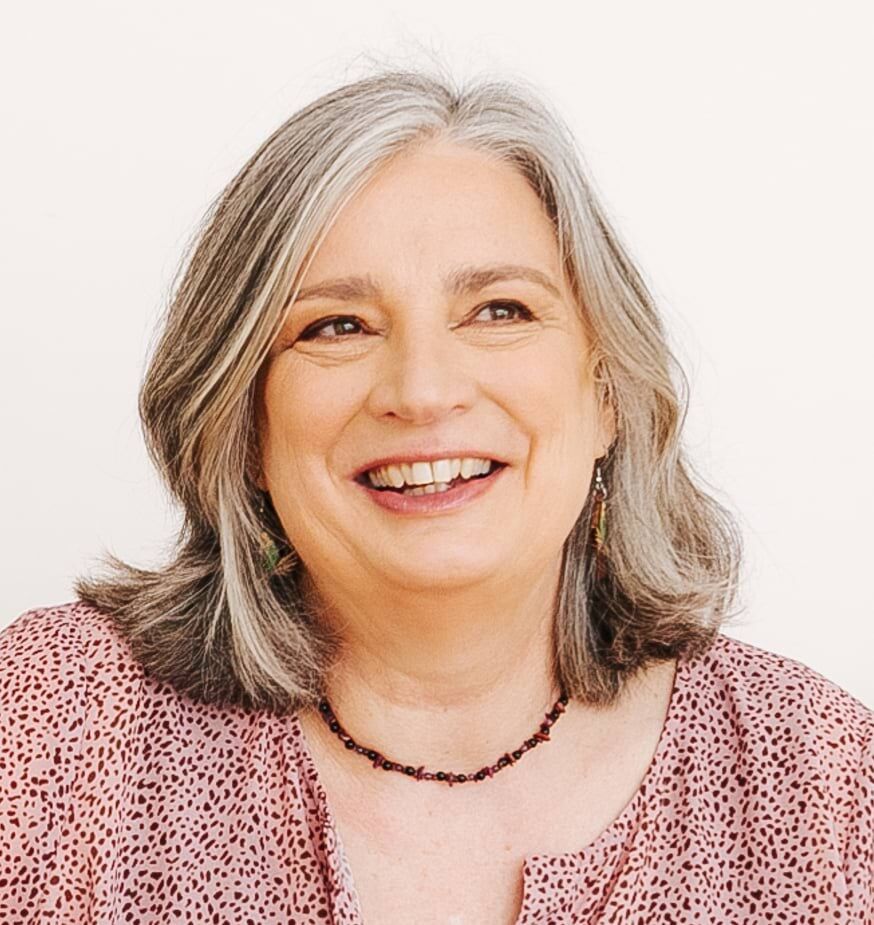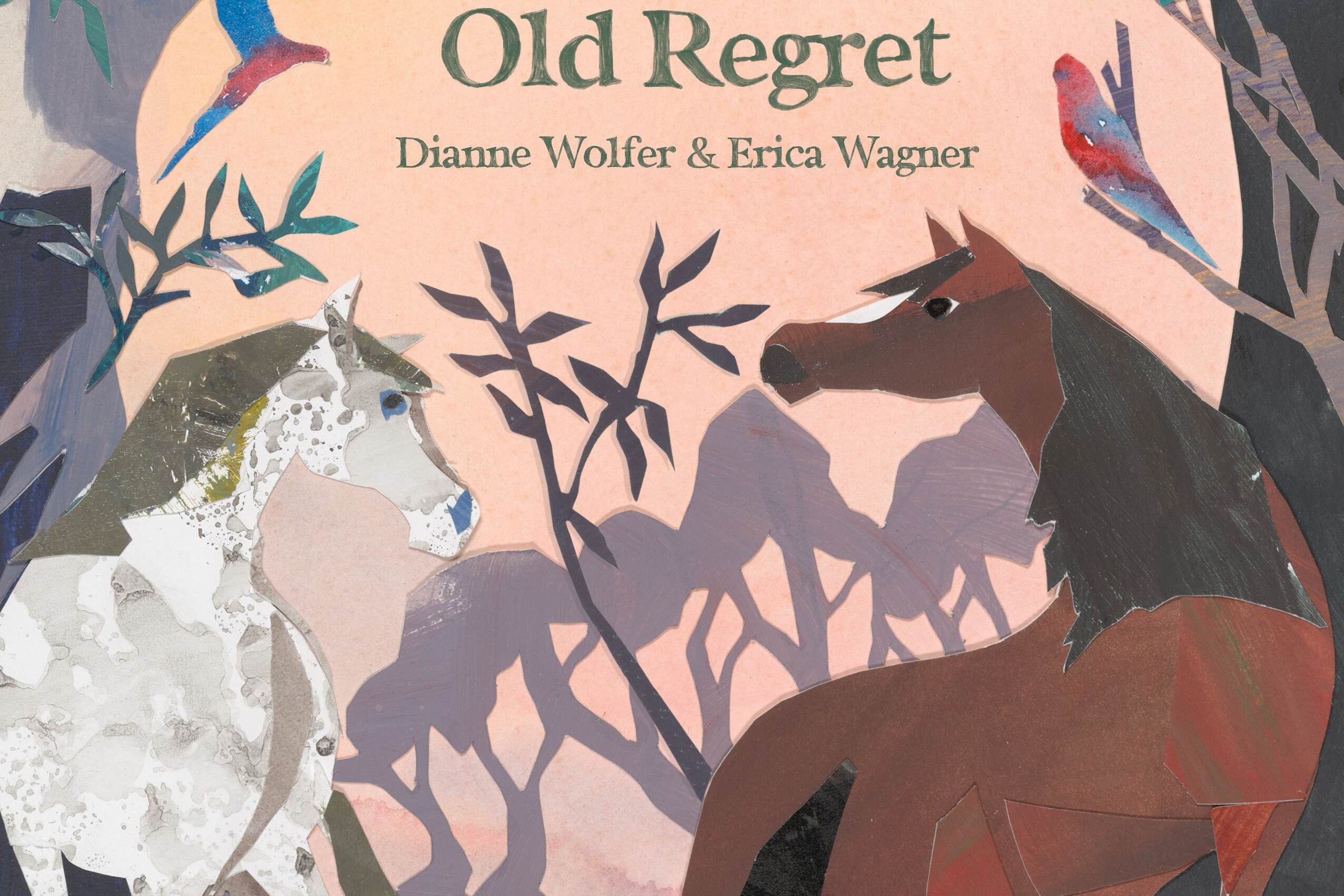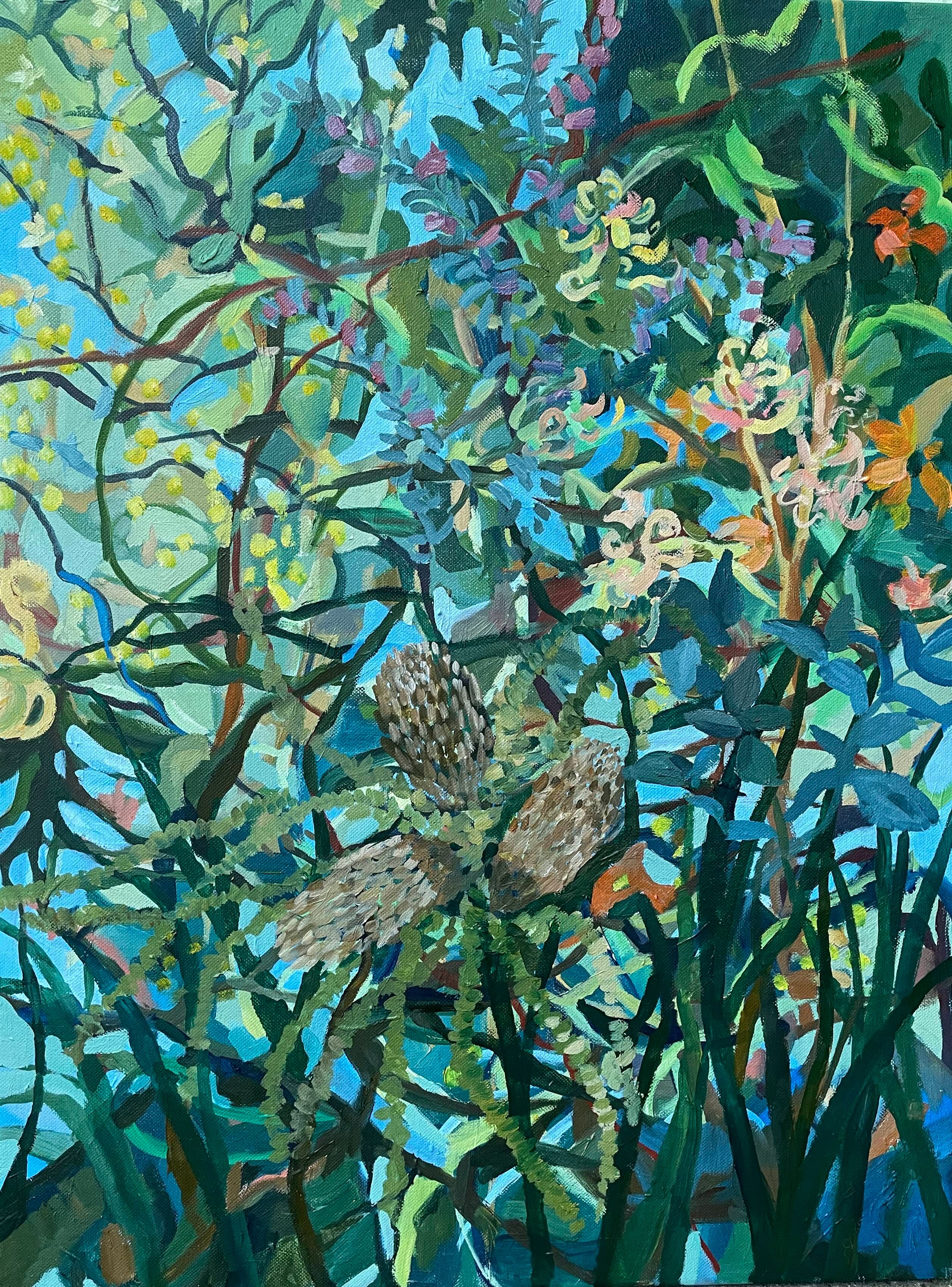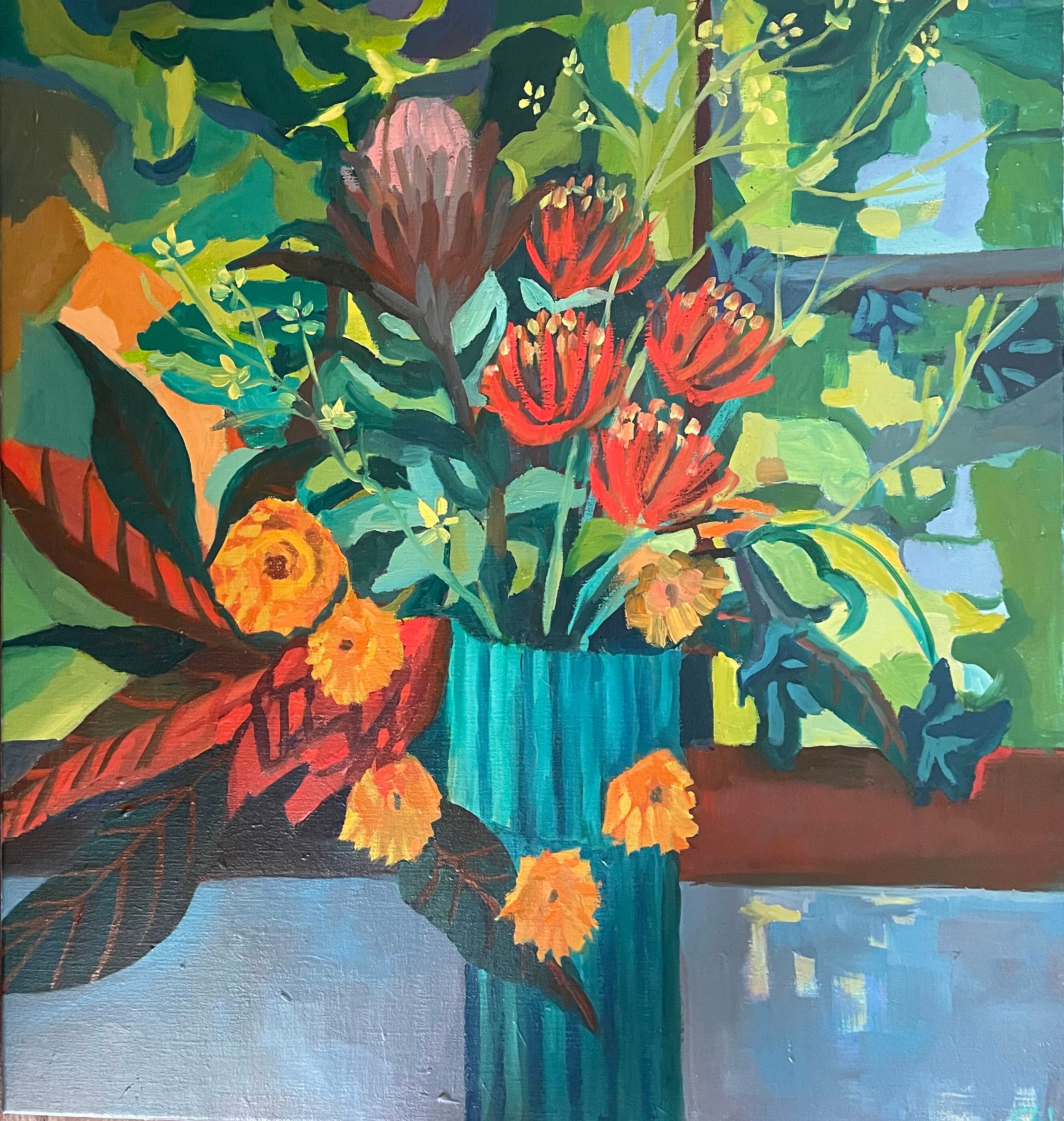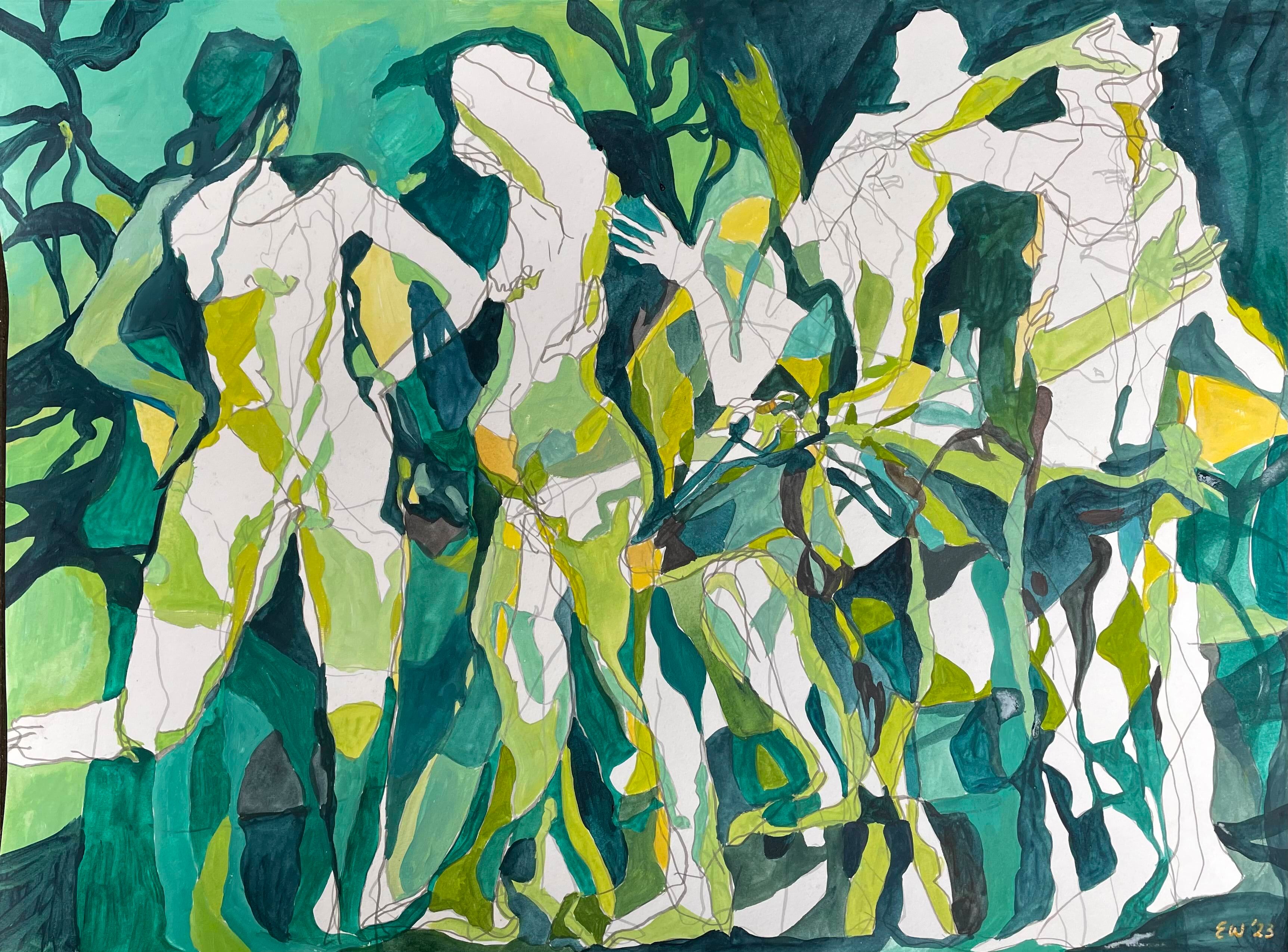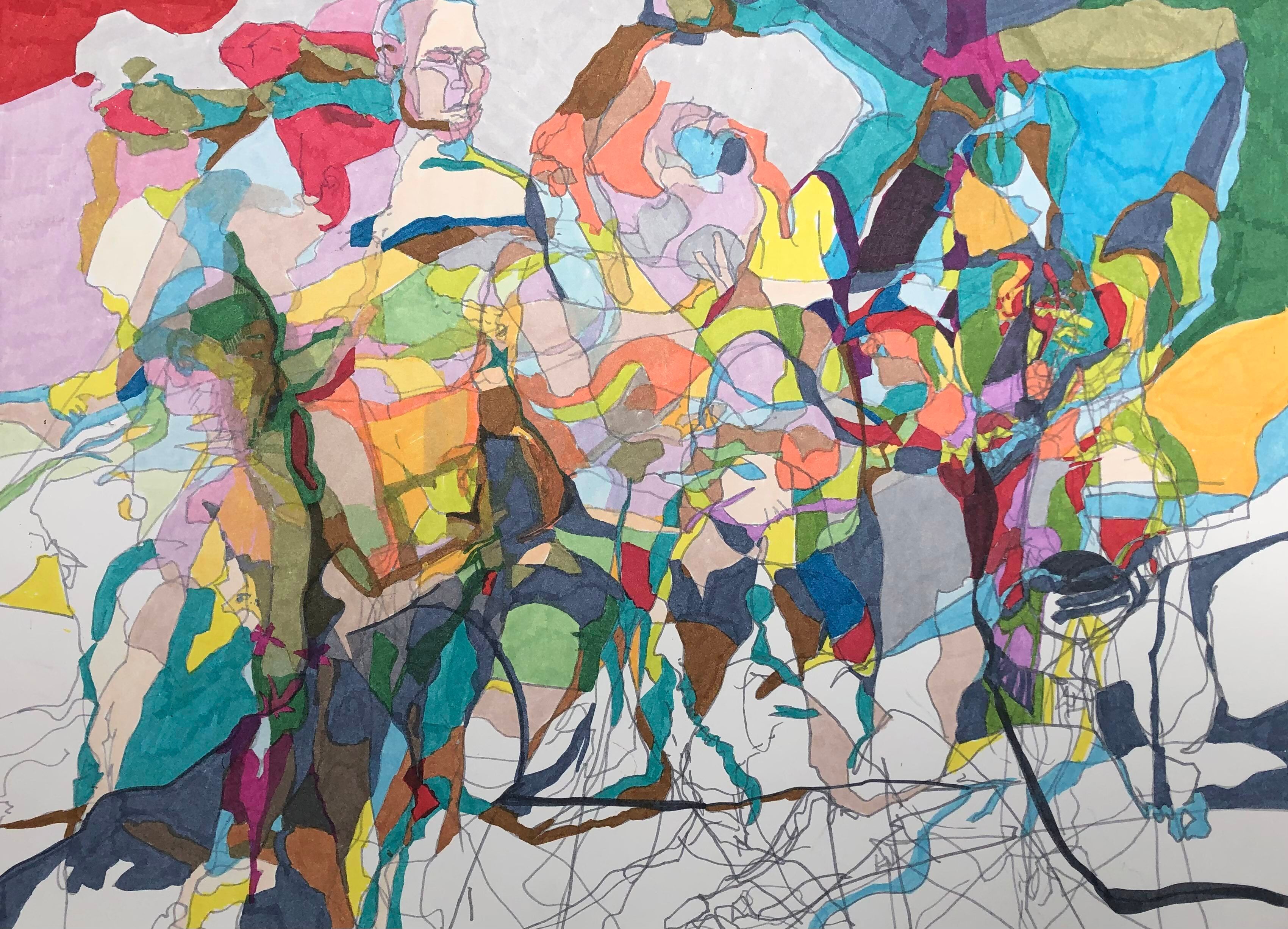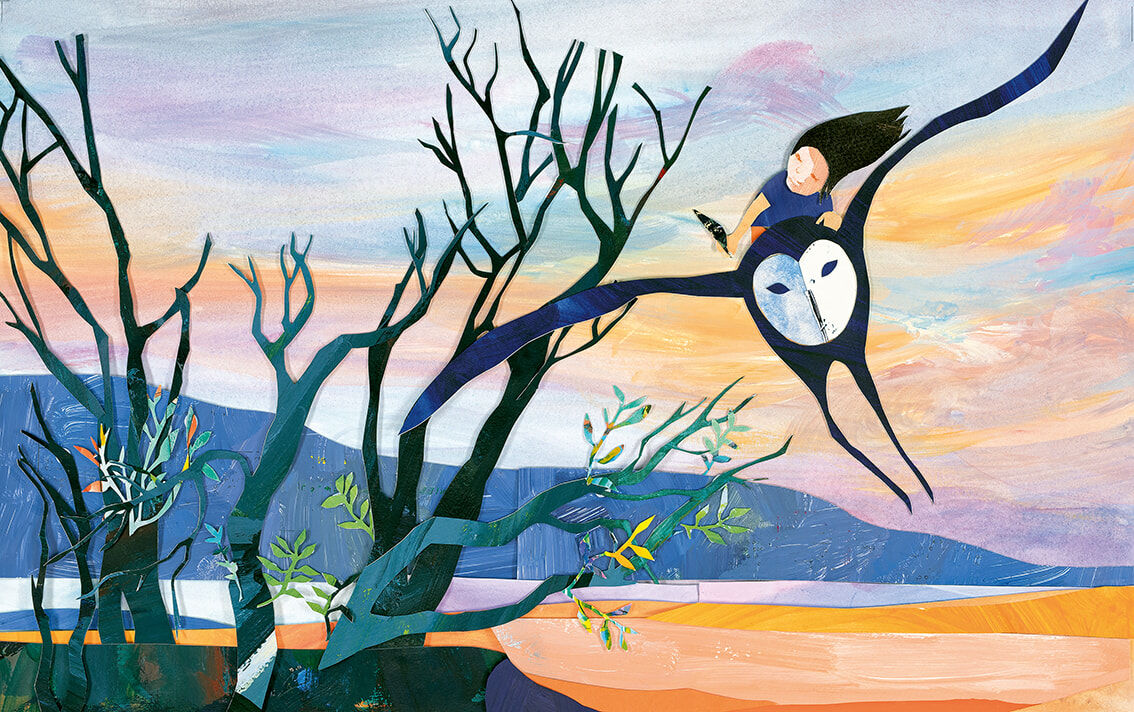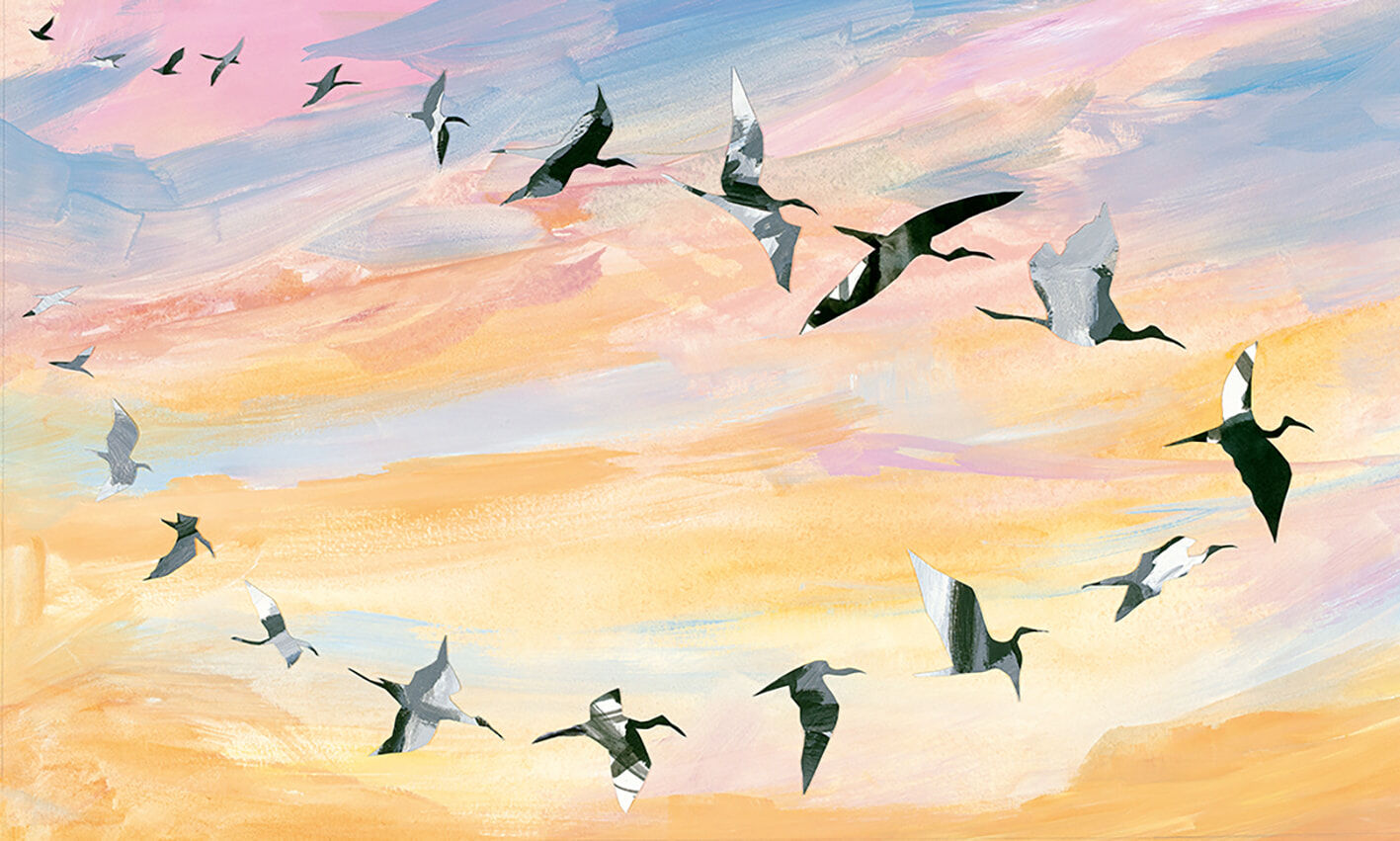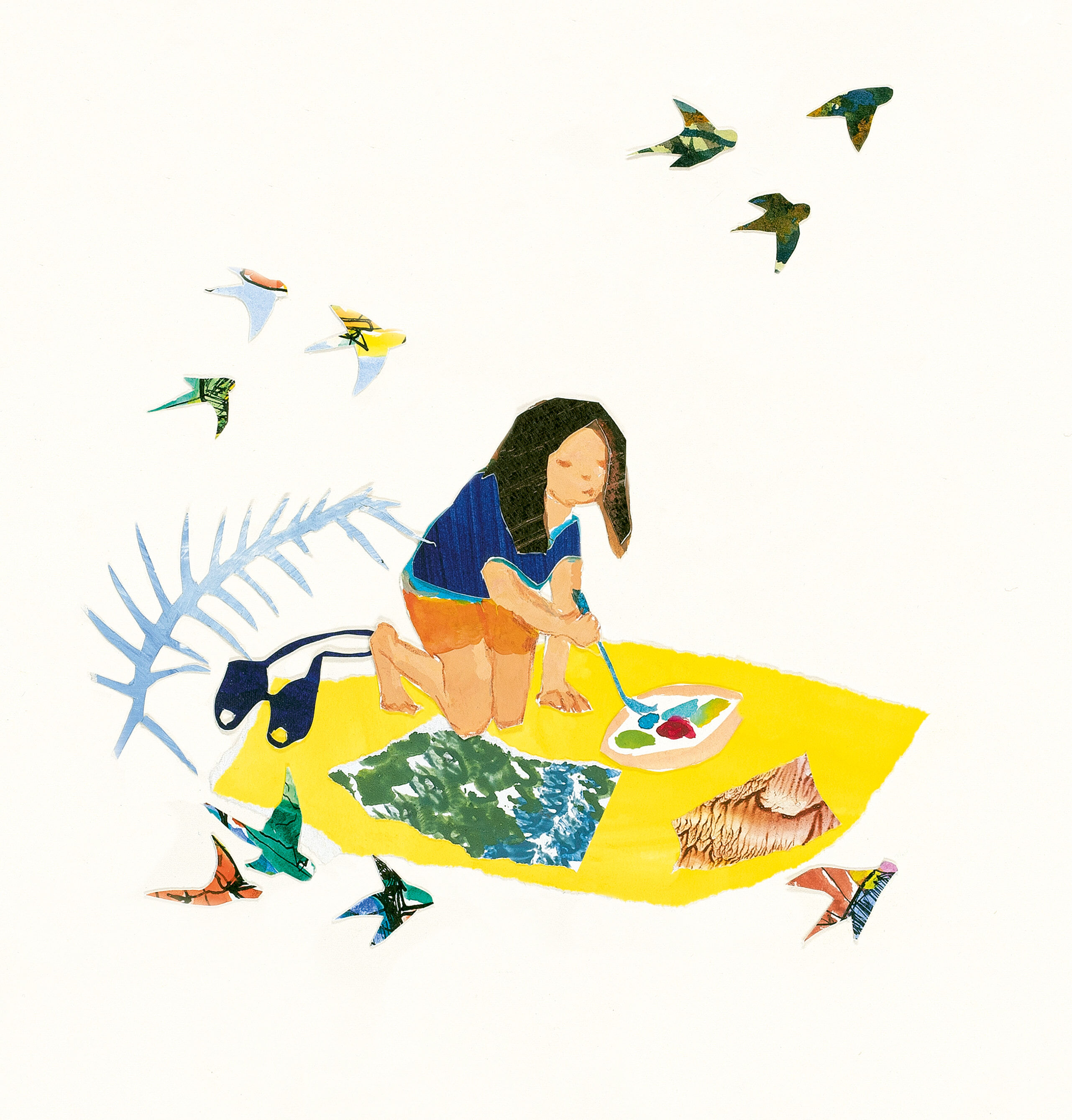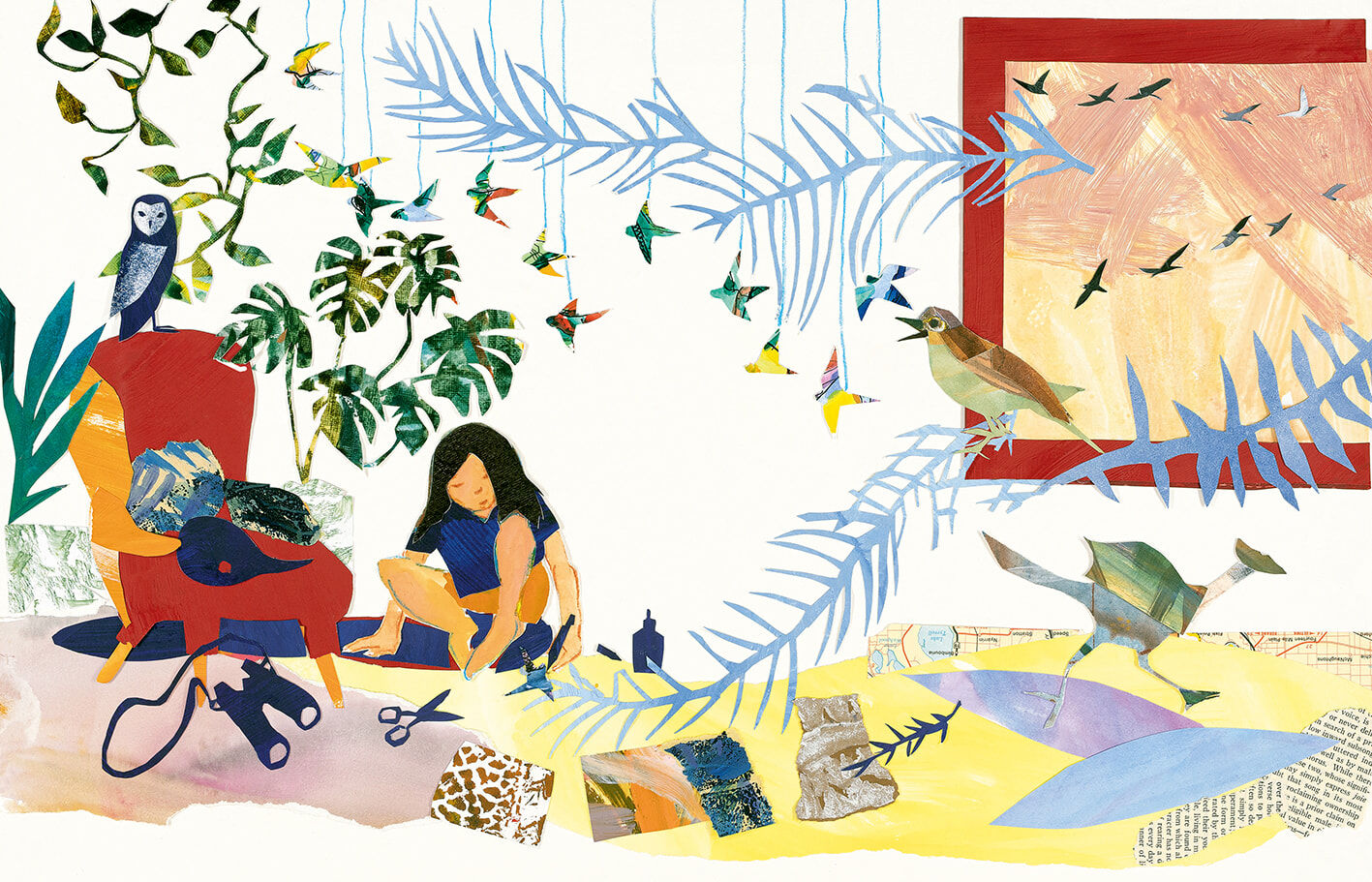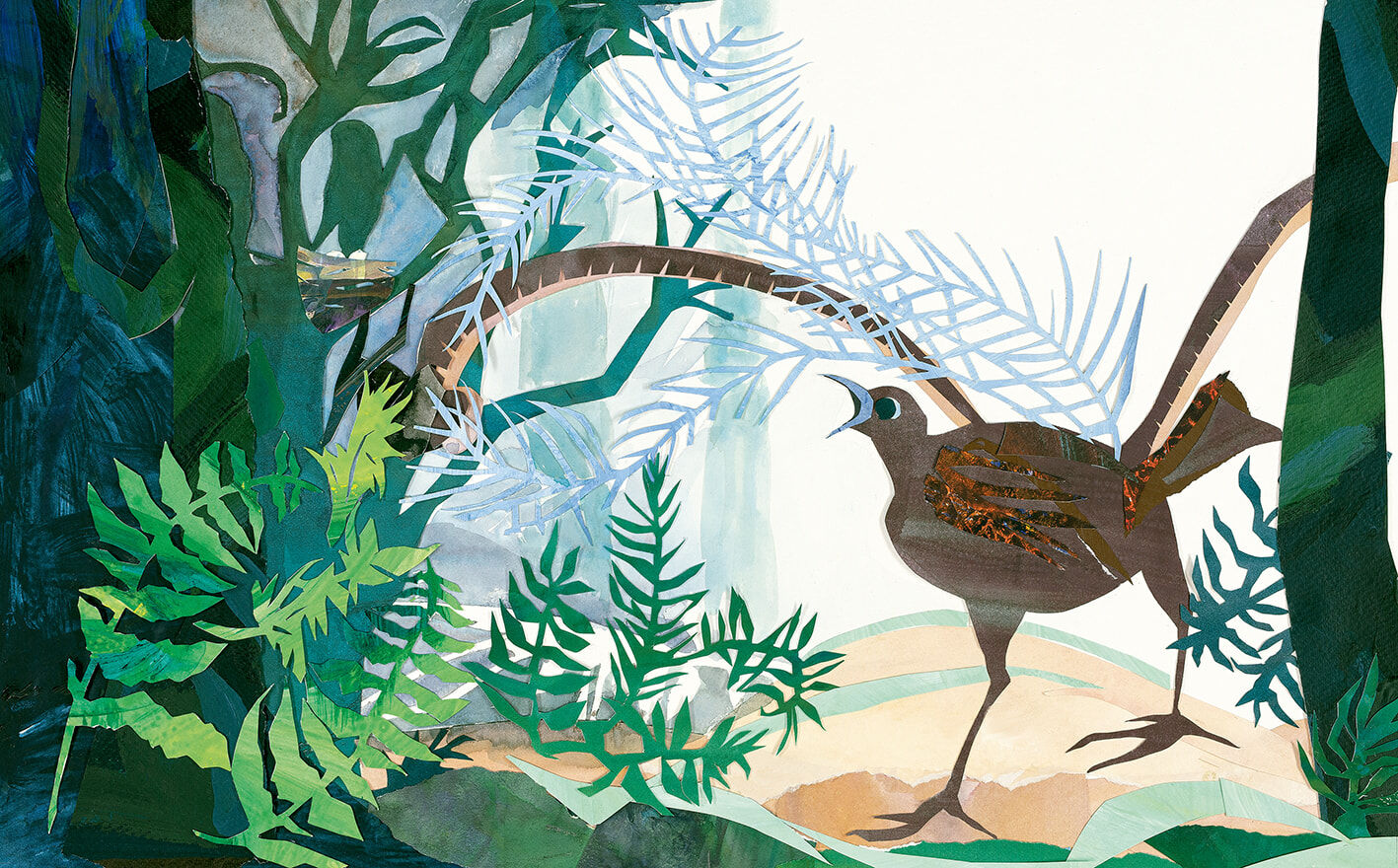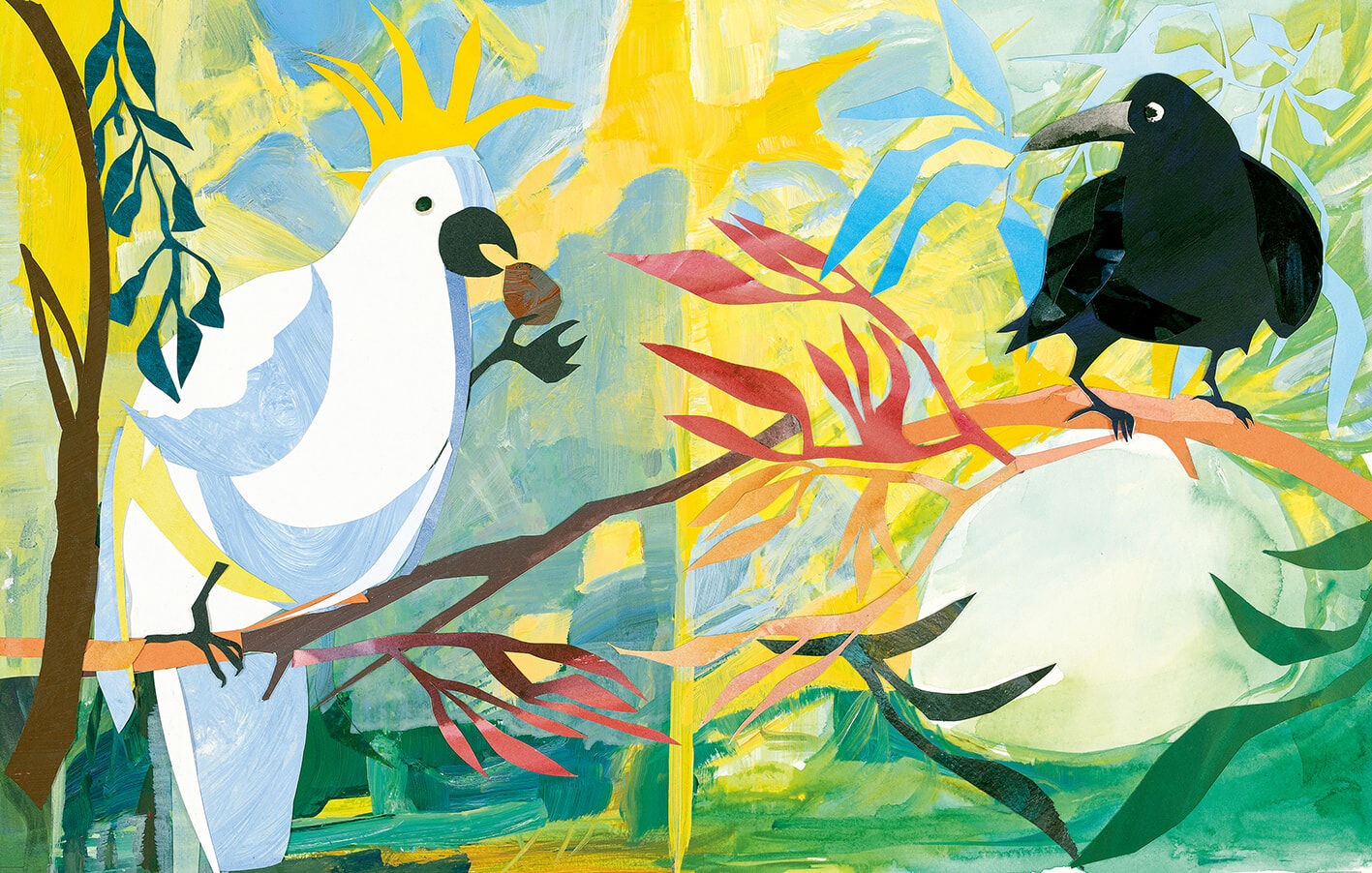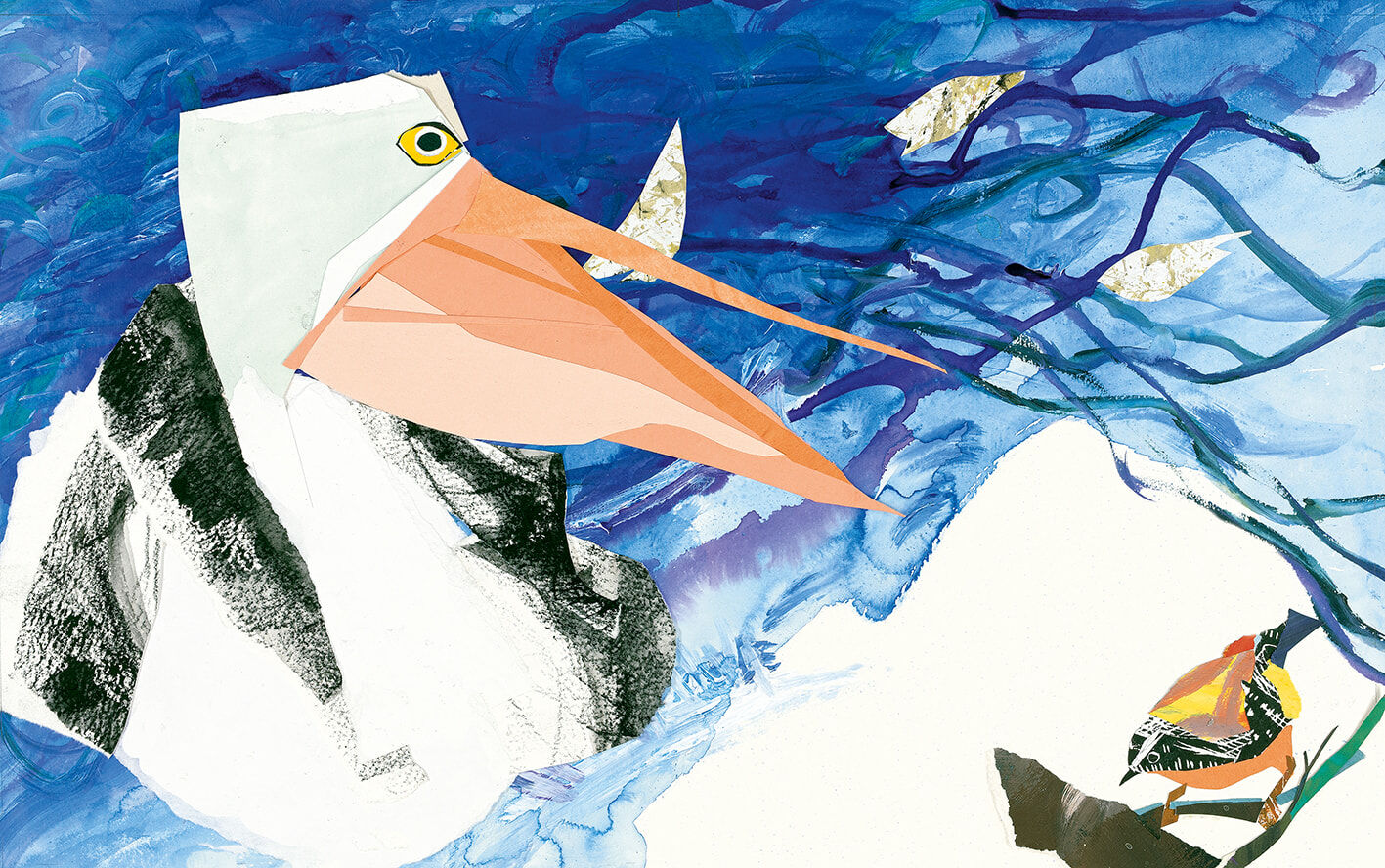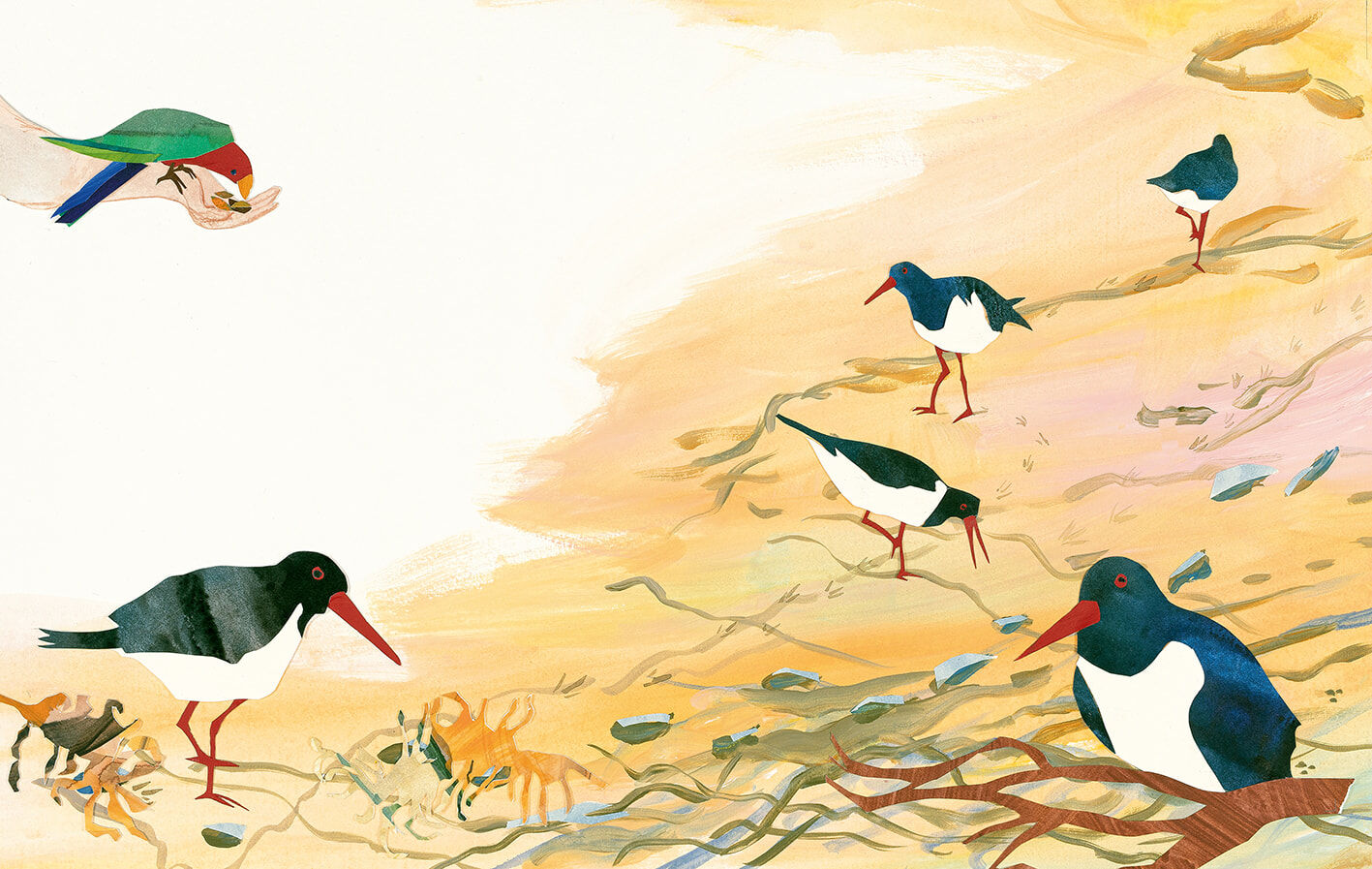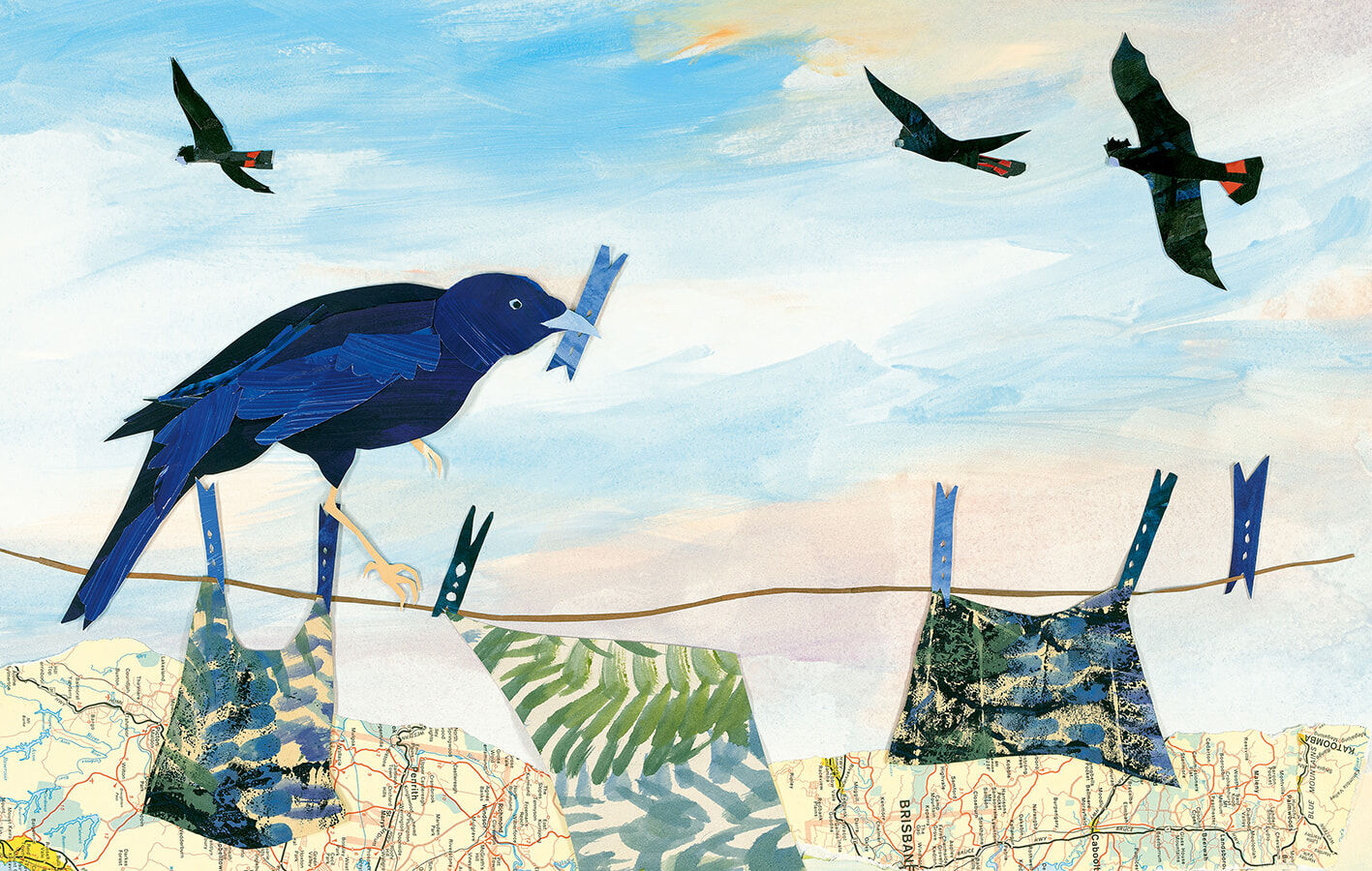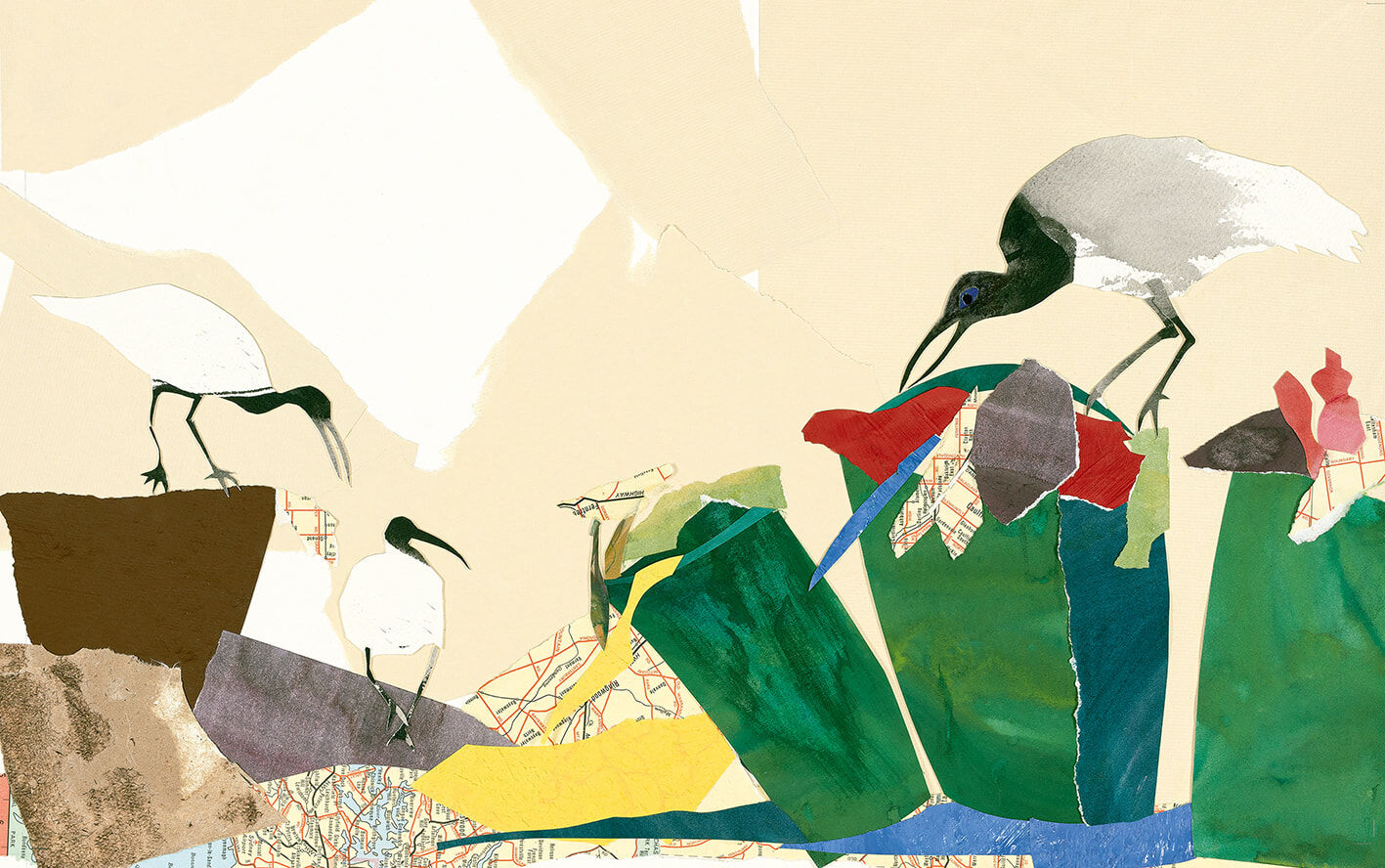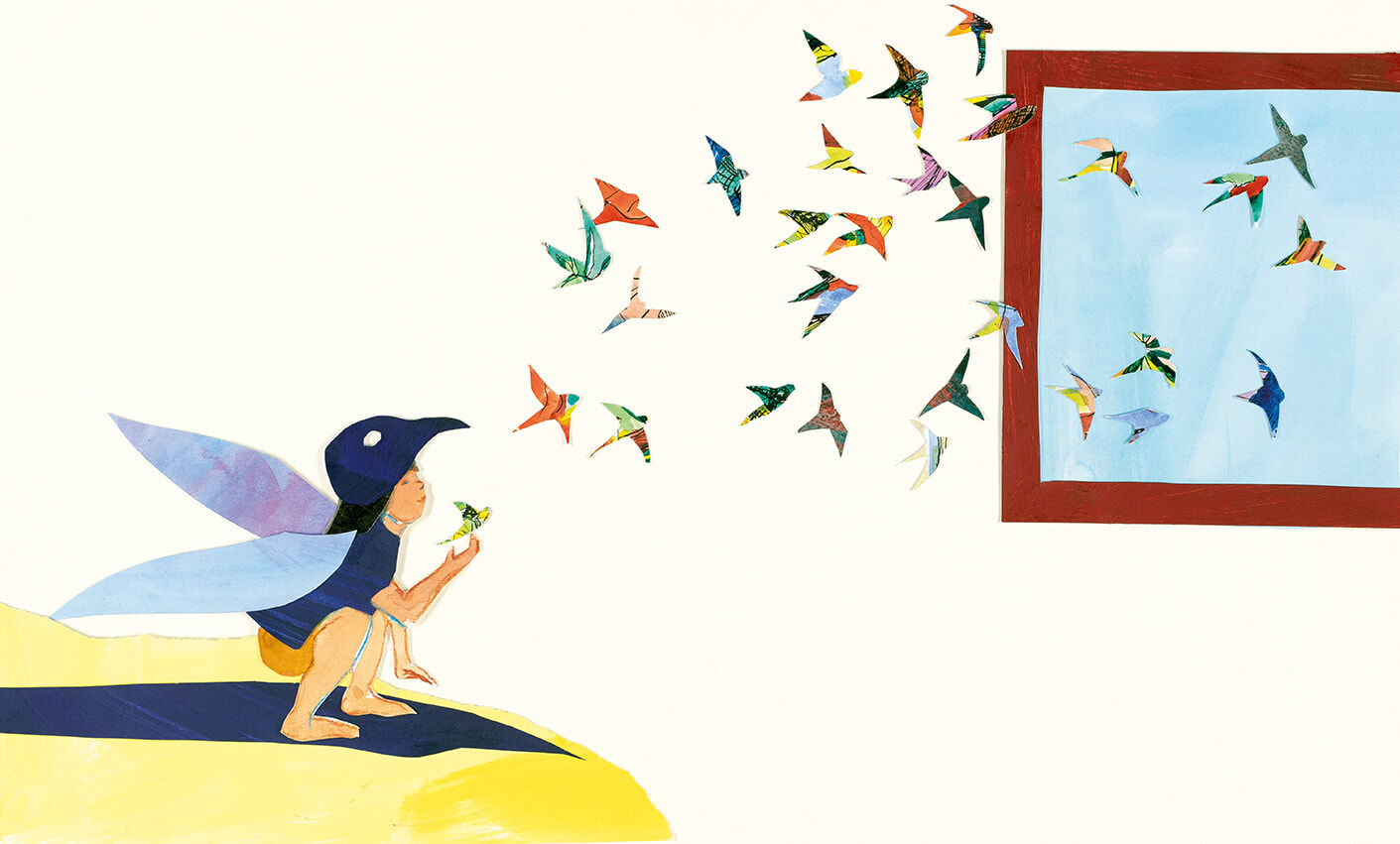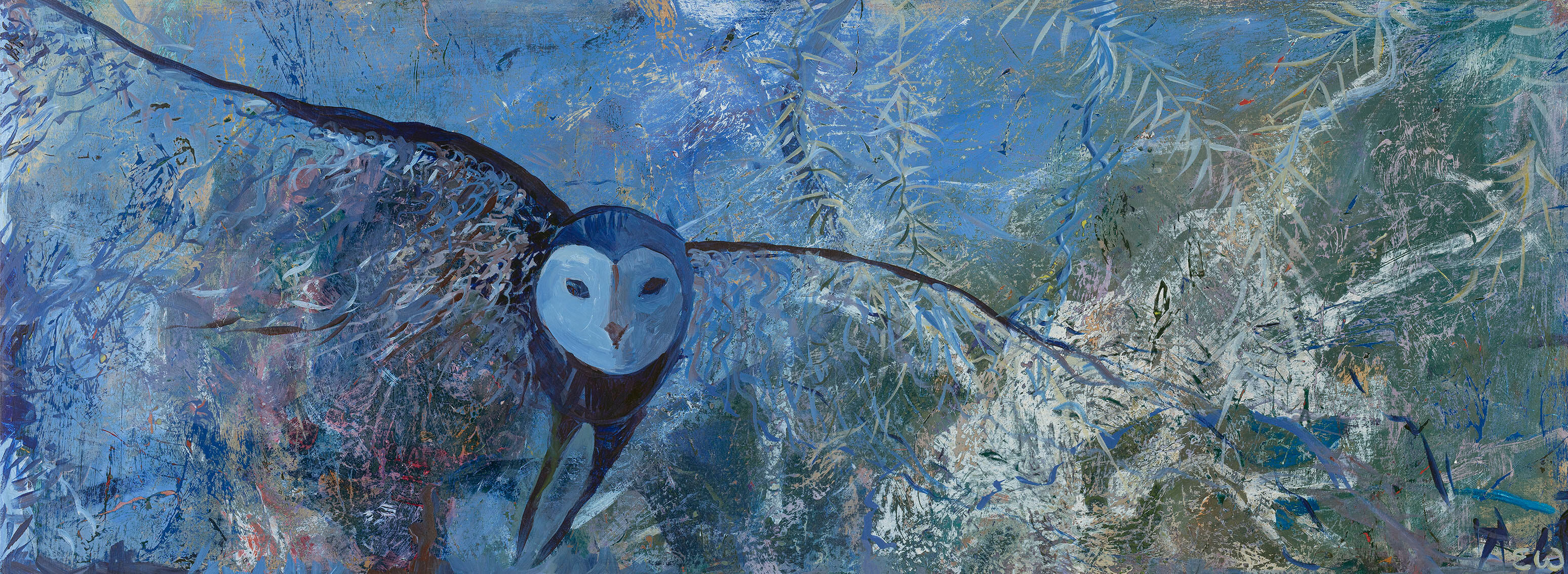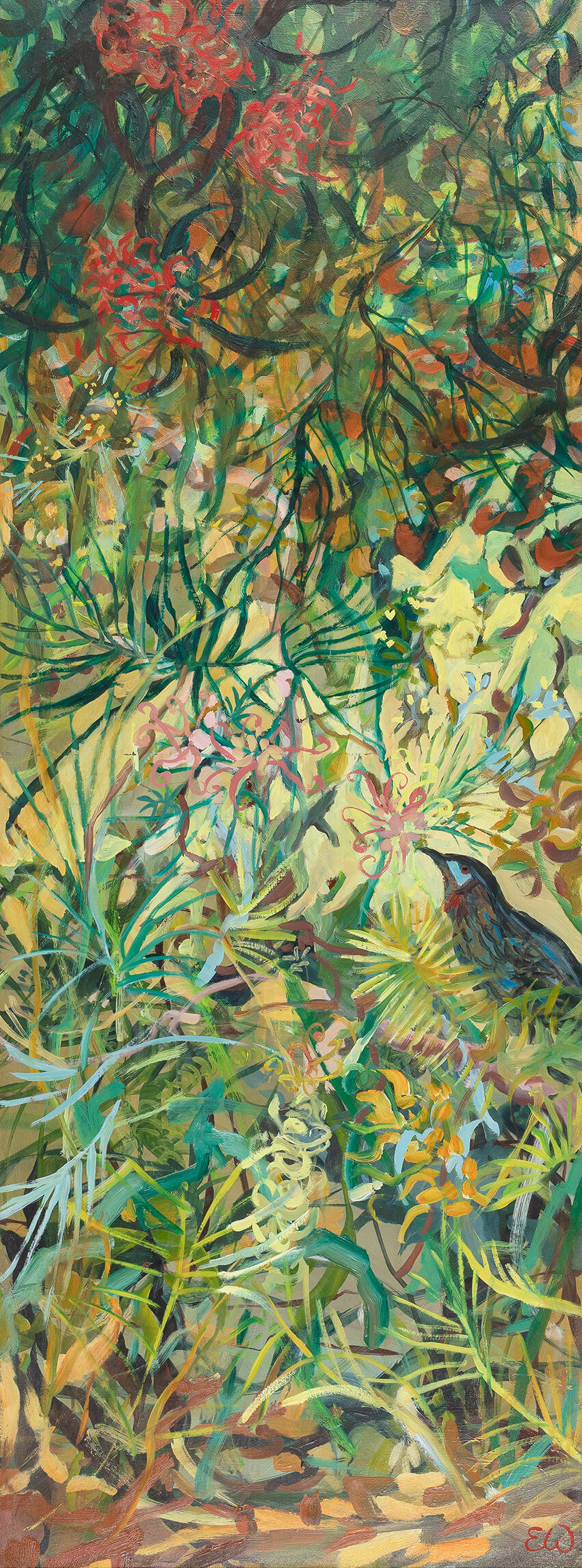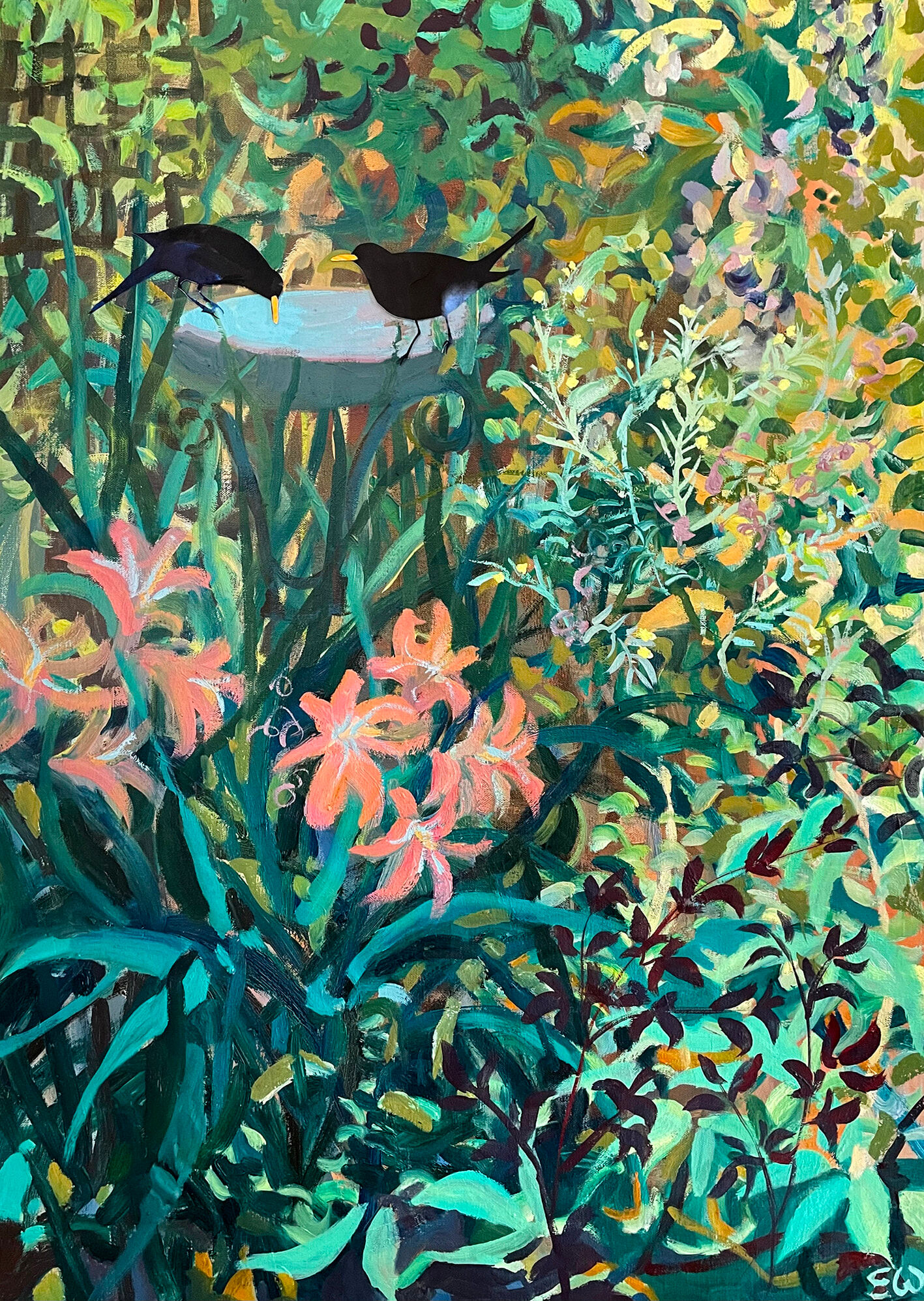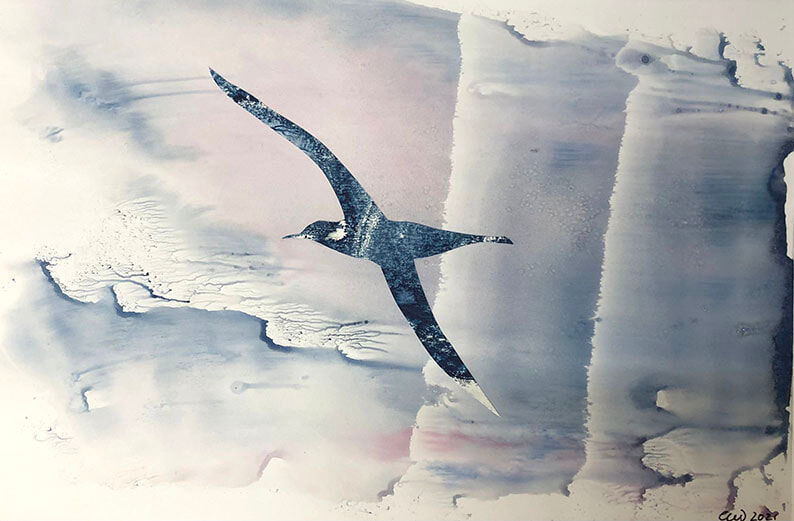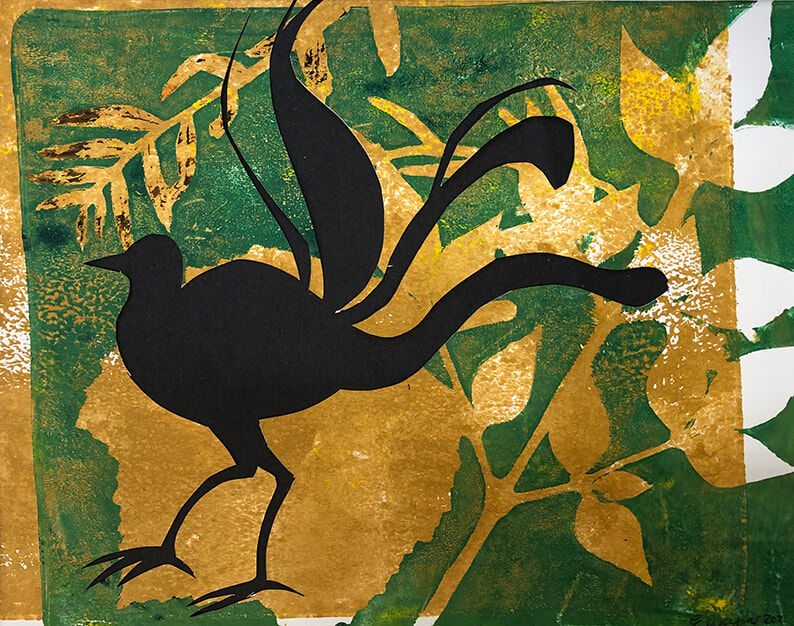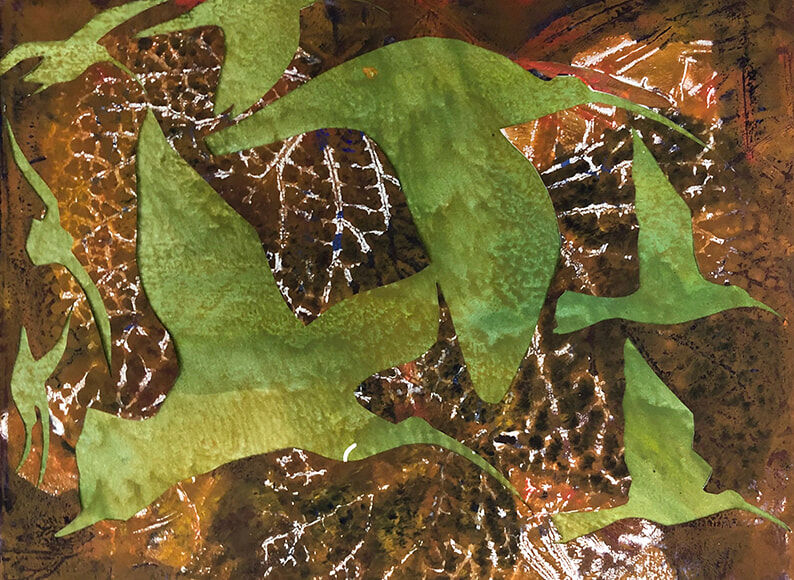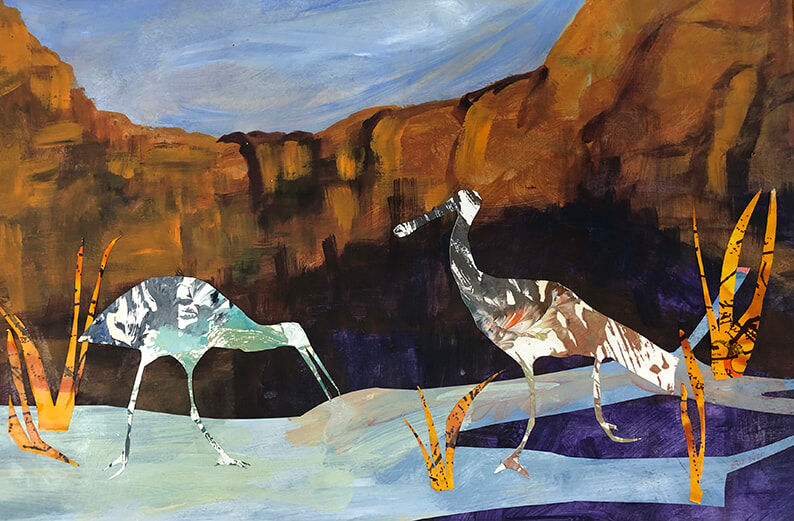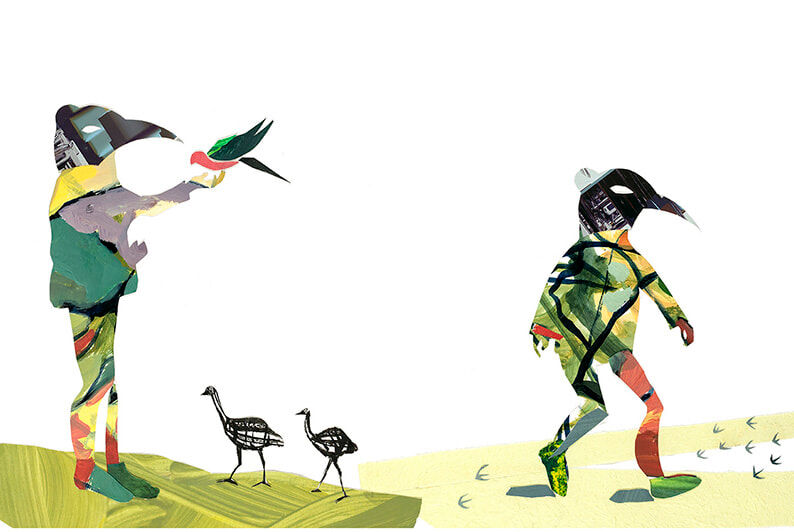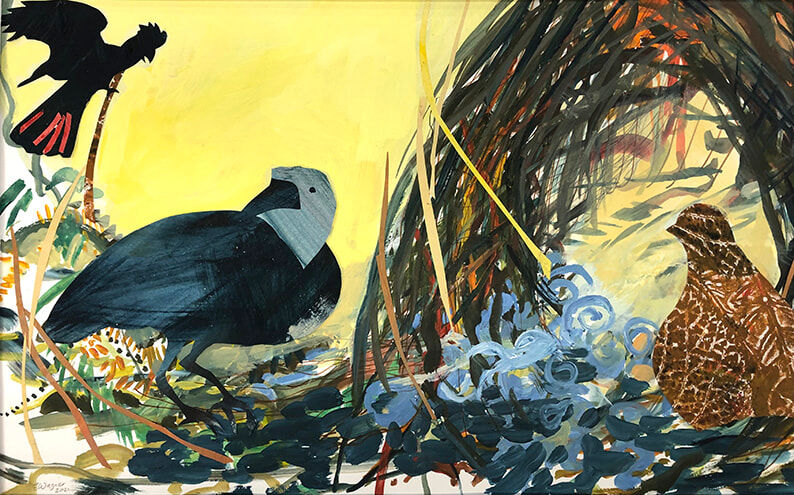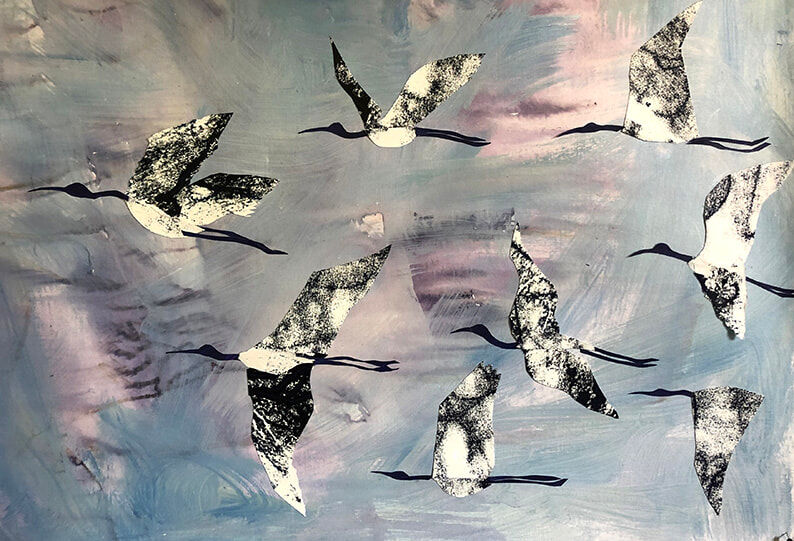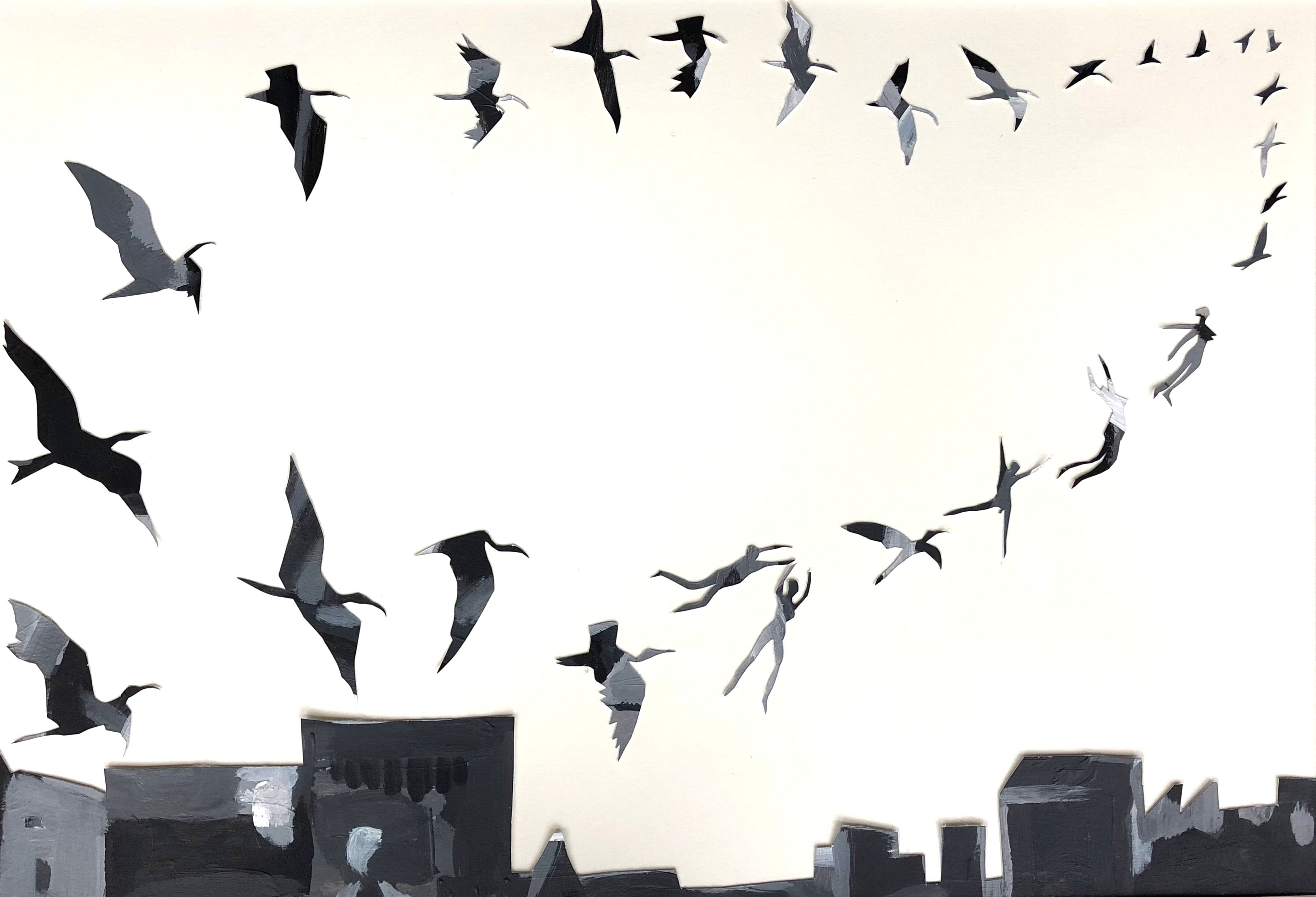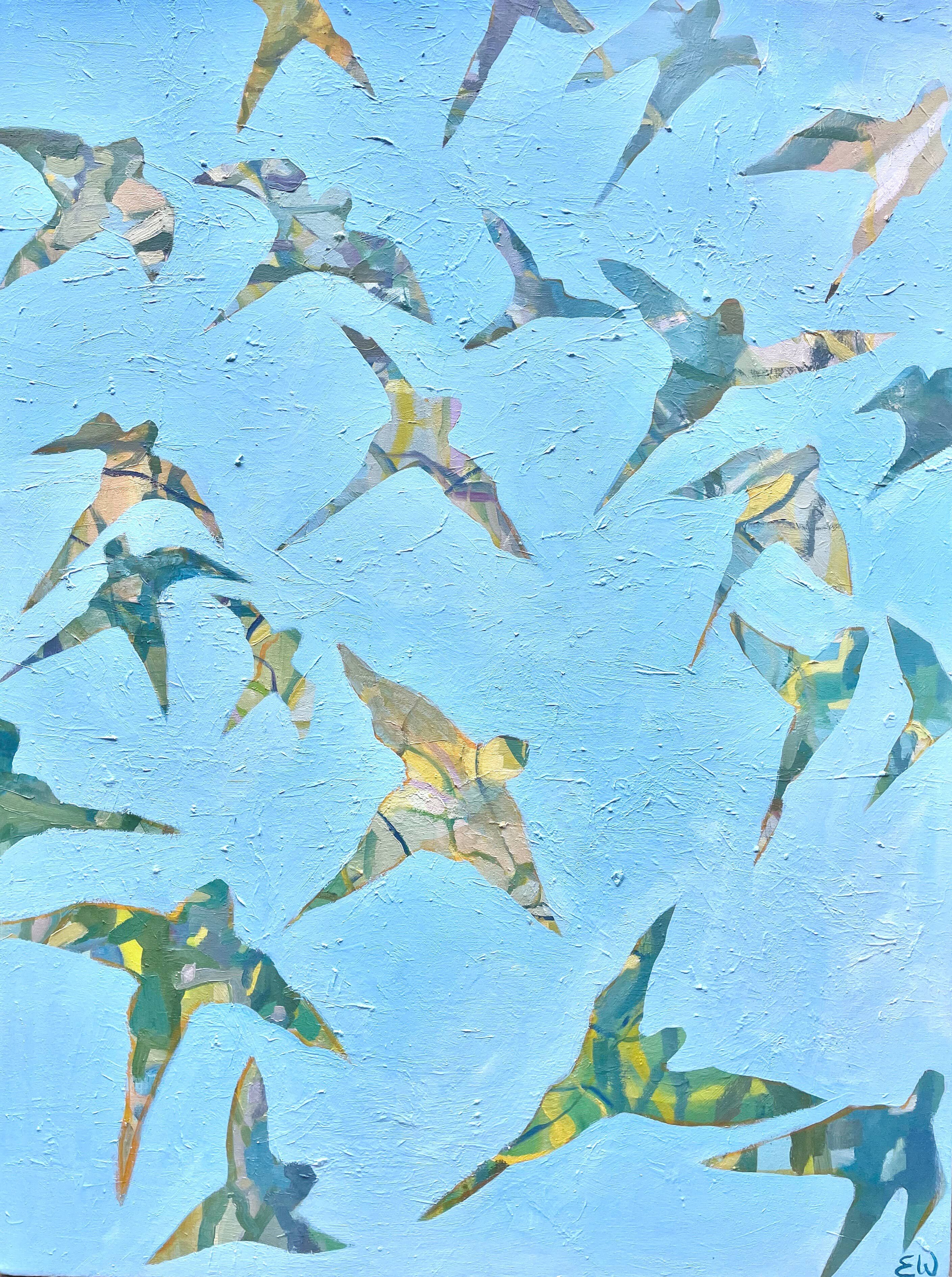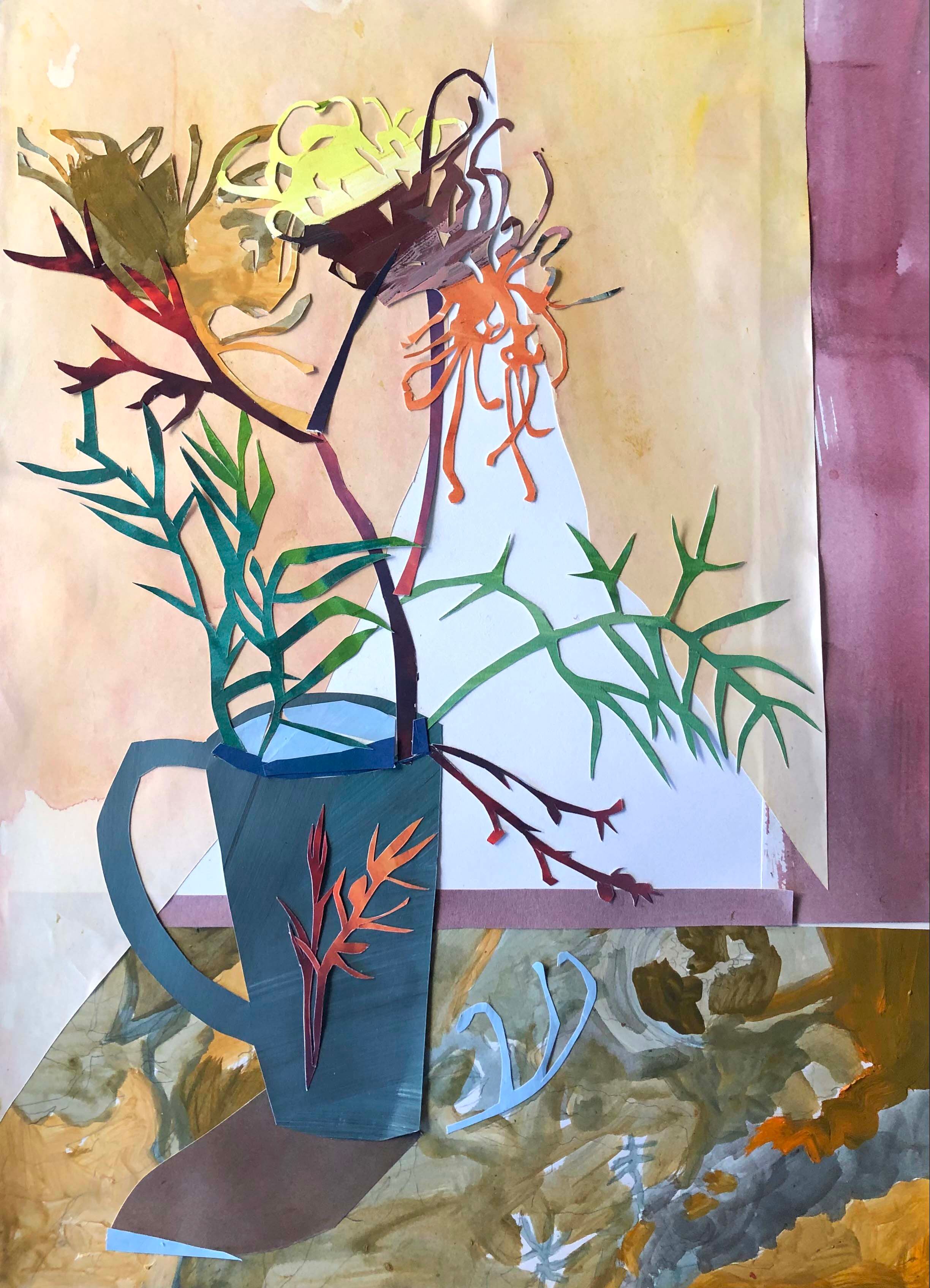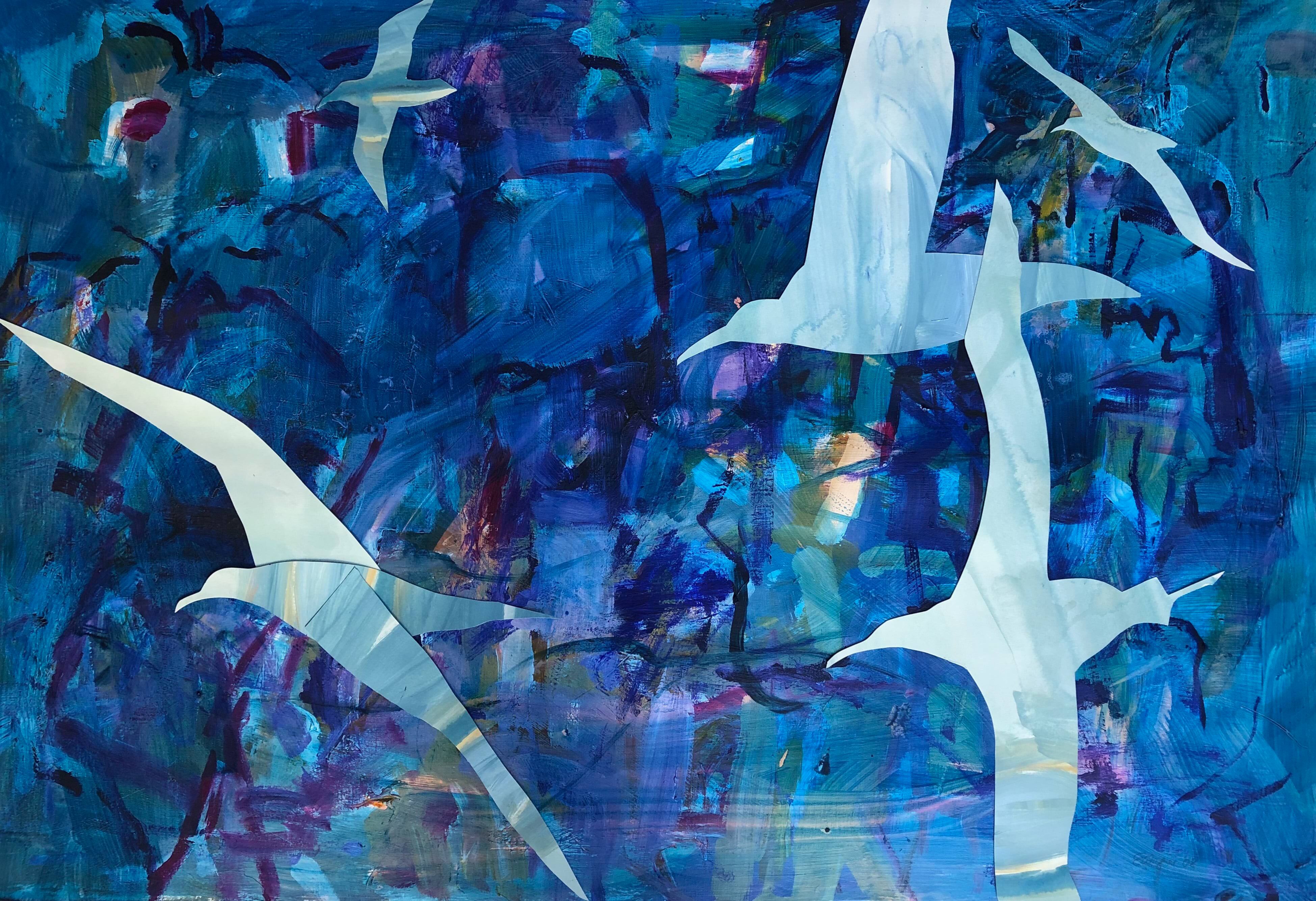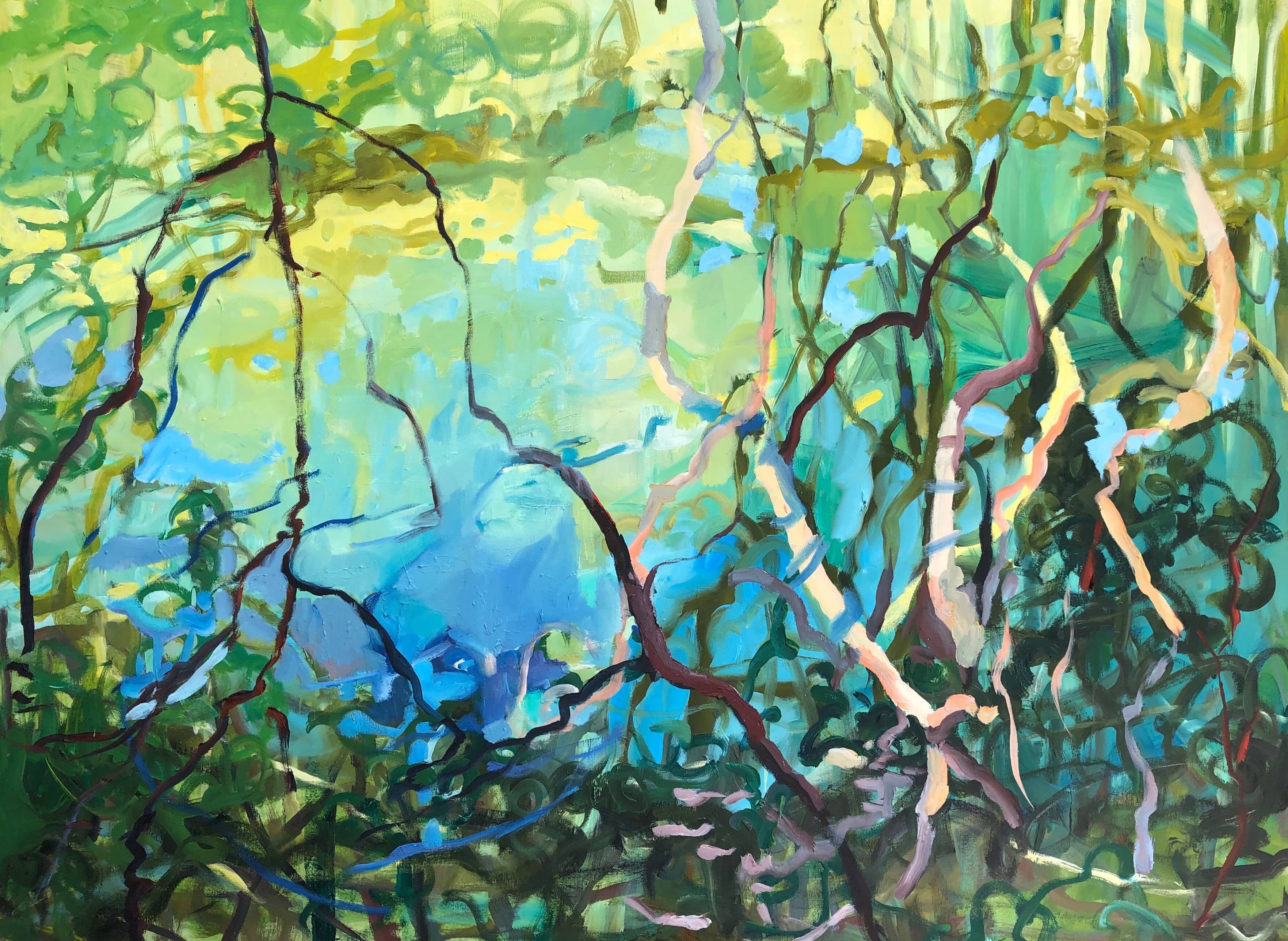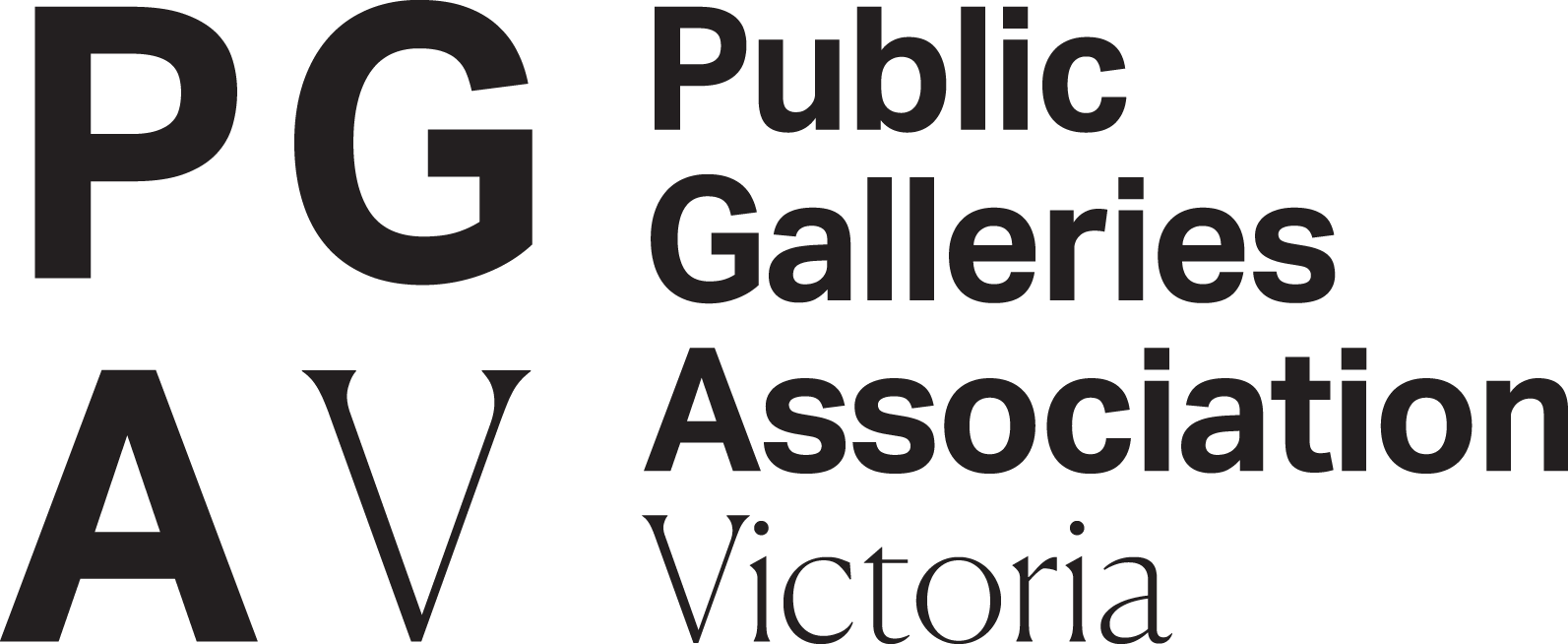Erica Wagner
VAS
My earliest art-related memory is finger painting a lyrebird when I was in kindergarten. I can still remember the feeling of joy when I saw the lyrebird emerge. I enjoyed art all through school and had a wonderful Year 12 teacher who encouraged me greatly. I started an arts degree at Melbourne Uni, with Fine Art as one of my subjects. But when I deferred after one year, life took over – travel, children, farm work and other odd jobs, several years bookselling, and finally my lucky break in 1988 leading to my life-long work in children’s book publishing – so it was 1994 before I was able to return to serious art study.
My interests have always circled around literature and art and my publishing career combines the two in a powerful way that has also fed back into my own creative life.
I always drew even when life was very busy and I was working full time. But as the years went by, I became frustrated by my lack of technical skills. So when my children were older, I started evening classes with Walter Magilton – learning observational drawing and a tonal realist approach to painting, working mainly in pastel.
Walter encouraged me to add life drawing to the mix, and I joined Yvonne Audette’s dynamic and challenging classes at the Hawthorn Artists Society. I loved the challenge of capturing the essence of a figure in movement through short poses of 1-2 minutes as well as longer poses and continuous movement. I loved the spontaneity of working in charcoal, with no time to overthink. But I struggled to meld this quick method of mark making with the more deliberate way I constructed my paintings. I needed to find a way to bring the two together.
That’s when I picked up a flyer in an art shop and started Richard Birmingham’s classes at the Melbourne Studio School. This was liberating! I learnt to see how colour could be used to evoke mood and atmosphere. Richard encouraged our group to just start – doing something, anything! – to work in layers, to transcribe works of great masters to understand compositional forces, to use direct observation and imagination to allow imagery to arise and develop naturally. I loved seeing how a meaningful image could emerge from seemingly random chaotic marks and a free, intuitive application of paint.
After a time I became frustrated that I didn’t have enough understanding of the subtleties of colour mixing. So I did a week-long course with Geoff Dupree, which changed my life. Classes and workshops with Christine Wrest Smith, Emmy Mavroidis, Godwin Bradbeer, Heather Betts, Katharine Hattam and Martin King were all immensely valuable.
I started to exhibit regularly, at the Victorian Artists Society, at Manningham Gallery, Glen Eira City Gallery, Cambridge Studio Gallery, Tussock Gallery. My first solo show at Cambridge Studio Gallery – ‘Dark Horse’ in 2011 – marked a turning point in how I viewed myself and shifted the balance between my art life and publishing life and I gradually cut back my working hours to find more time for my art.
During the last eight years, I’ve travelled widely in central and northern Australia with my partner, including six months living in Darwin in 2019 while co-facilitating the inaugural Octopus Story Camp. Sketching and painting en plein air inspires larger works that I later develop in the studio.
A residency with Emmy Mavroidis and Helen Edwards at Nyora Studio Gallery in Eltham in 2015 enabled me to find a deeper understanding of my creative process and a way to see the connection between my life drawings, landscape painting, collages and imaginative/symbolic paintings. This work informed my solo shows, ‘Sanctuary’ and ‘Little Wings’ at No Vacancy Gallery, Federation Square, in 2016 and 2018, and ‘Outside In’ at the Peisley Street Gallery in Orange in 2019. Yvonne Audette remains a powerful influence and I am indebted to her insights and support as a mentor and friend.
During the last decade or so, I have travelled extensively in central and northern Australia with my partner, including six months living in Darwin in 2019 while co-facilitating the inaugural Octopus Story Camp. Sketching and painting en plein air inspires larger works that I can later develop (or destroy!) in the studio. Four-wheel driving, camping and waking in my swag to deafening birdsong has been a highlight of travels in the remote areas, and a significant inspiration for Hope is the Thing.
Literature and art are my lifelong passions; and my editorial and publishing work combines the two in a powerful way that has also fed back into my own creative life. Working closely with incredible creators like Leigh Hobbs, Trace Balla, Chris McKimmie, Armin Greder, Gregory Rogers, Jane Tanner, Ann James, Karen Rogers, Samantha Campbell and so many others, including – especially! my partner Craig Smith – has given me an acute understanding of the highs and lows of the creative life, and how persistence and a steady work ethic is the key to it all.
My grown-up children and five grandchildren and our blended, extended family cluster is a huge source of inspiration and joy. Many happy times have been spent making and doing around our dining room table – a ‘go to’ activity to enable free-wheeling conversation and connection.
The lockdown years stopped me travelling, so having the chance to collaborate with Johanna Bell via Skype to develop Hope is the Thing has been a joyous experience. I now seem to be busier than ever working freelance as a publishing consultant and co-director of Twelve Panels Press but am glad to be able to organise my time to suit myself, and explore ideas for my art. I now see that improvisation and working in layers lies at the heart of my practice and am excited to see where this approach will take me in the future.
www.ericawagner.com.au
Instagram @ericawagnerartist
Exhibitions & Events by Erica Wagner
Acknowledgment of traditional owners.
We would like to pay our respects to the traditional owners of the land on which our building stands, their leaders, past, present and emerging.

